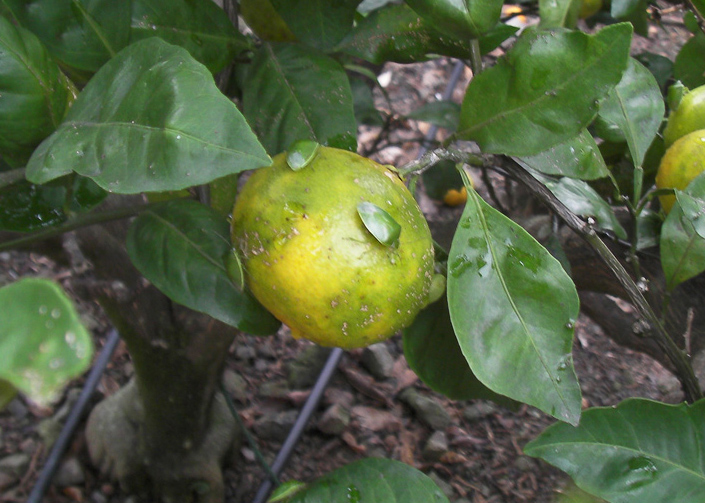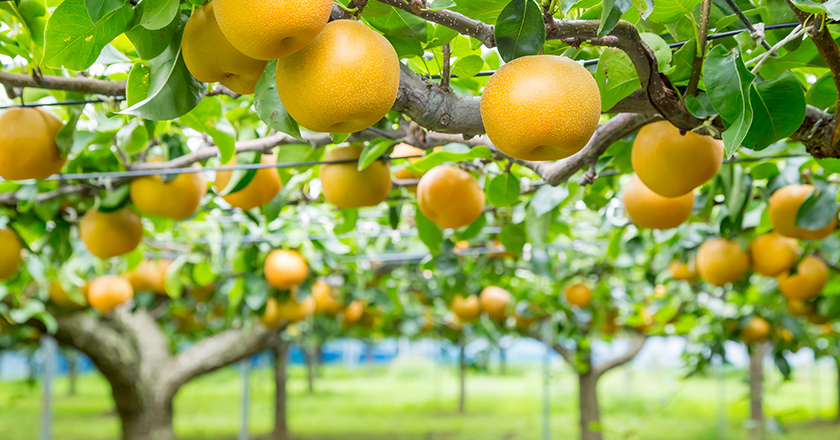The higher the temperature gets, the faster the insects grow, and the easier it is to overwinter
Why do pests increase in number when global warming advances? It is very much related to each insect’s lifestyle in its entire life and its life history.
Every insect, being heterothermic, has a temperature called the developmental zero, which is a standard by which to grow, reproduce, and provide the next generation. Basically, insects save the excessive temperature as an energy in the body and grow. For example, if the developmental zero of an insect is 10°C, on a day of 12°C, the insect will grow by that extra 2°C. On the other hand, on a day of 8°C, the insect will not go backward, but it just stops growing. Therefore, it will grow faster if there are more days with excessive temperature. Eventually it becomes an imago, and lays eggs after accumulating a certain amount of energy, and then there will be an alternation of generations.
If it grows faster, the period of growth will be shorter. Thus, for example, an insect which used to take 30 days to become an imago will grow in 20 days, and the period of alternation of generations will also become shorter and shorter. Pests that are often causing problem in agriculture originally undergo alternation of generations many times. In warm regions, it is not so unusual to have insects that undergo alternation of generations 10 times per year. The population increases at an exponential rate by the alternation of generations. Suppose that 100 insects increased by 100 times to 10,000. If the final generation increases, 10,000 insects increase by 10,000 times to 100 million. Therefore, the impact is very significant.
The rise in temperature through the year due to global warming is a contributing factor, but the rise in winter temperature is also causing a considerable impact. For insects, making it through the winter, when it is cold and there is little food, is a big challenge. The growing phase of overwintering insects varies. Some species overwinter as imagoes, while other species overwinter as eggs. In a temperate zone, many species decide whether they should undergo alternation of generations or not, depending on the changes in daylight hours. For example, in early autumn when the daylight hours get shorter, in the final phase of larva, species that overwinter as imagoes consider whether the laid eggs can become imagoes before they enter winter. If they think it is difficult and refrain from laying eggs, they fill out themselves and try to overwinter by diapause. When the temperature in winter rises, a fully-prepared imago will overwinter, and undergo alternation of generations at the beginning of spring, and will increase their number explosively.
In addition, because of the temperature rise in winter, there is a situation in which southern insects that originally lived in the warm southern regions are expanding their distribution area to the north.
Frequent explosion of Glaucias subpunctatus heading north due to global warming in recent years
In recent years, among agricultural pests that are seen as problematic, there is green stink bug (Glaucias subpunctatus) harming orchard trees. In 2023, they exploded in areas in the Kinki and Chugoku regions and attracted attention. Although they used to be insects from southern areas, they went northward at once, and were identified in Iwaki City of Fukushima Prefecture and Morioka City in Iwate Prefecture. In my research department, a student from Chiba Prefecture has pioneered research on G. subpunctatus since 2007, triggered by the damage report that the student heard from a friend who was a pear farmer. That is why we can send out information on life history traits.
Glaucias subpunctatus belongs to the group called fruit tree stink bugs. There are three major species among approximately 40 species. Brown-winged green stink bug (Plautia crossota) is the most abundant kind and became a big problem nationwide. Brown marmorated stink bug (Halyomorpha halys) caused considerable damage in northern Japan, where P. crossota is not so common. Then, there is G. subpunctatus.

Originally, the fruit tree stink bugs that eat the fruits of cedar and hinoki cypress were insects that lived sparsely in forests. But as Japan planted cedar and hinoki cypress trees with national commitment, they explosively increased from the 1980s, just like pollen allergies that are said to be the national affliction of Japanese people.
Among the fruit tree stink bugs, P. crossota became an issue at first because it was the most abundant, and research to tackle the issue started to be conducted. In the meantime, H. halys was investigated arduously in the apple producing regions, where mainly apples were damaged, and measures started to be taken. Under such circumstances, as the area where G. subpunctatus emerged overlapped with that of P. crossota, it was considered that the emergence shift and removal method were generally the same. Therefore, it was not thought as important as a research subject.
However, owing to the warming, they suddenly started to move northward. Then, when we focused on it, we began to see a completely different aspect. For example, in autumn, when daytime becomes shorter, P. crossota will diapause at an early stage in preparation for overwintering, while G. subpunctatus is a southern insect, and does not have such trait. In other words, it can keep storing energy without diapause, even after the autumn advances. I think that is why it can lead to an outbreak the following year.
In the first place, while fruit tree stink bugs damage fruit trees, their food is the fruits of hinoki cypress and cedar that are the congeries of fat and protein. When they finish eating all the fruit, they leave the forest and are lured to orchards, but what they are looking for is not the flesh but the seed of fruit. Although stink bugs pierce the fruit with their needle-shaped mouth and search for seeds, they cannot reach them because some fruits have no seeds or the seeds are too deep inside. However, as the bugs leave the trace of sucking, the fruits cannot be sold anymore. Something tragic is happening here that makes no one happy. Generally, agricultural pests damage farm products by browsing plants that feed them. However, for fruit tree stink bugs, as a fruit tree is not a feed itself, they will run away as soon as the agrichemicals are scattered. The difficulty of taking measures against fruit tree stink bugs lies there.
Having said that, some clues leading to measures are also being found by understanding their life history traits. We started to understand that the Chinese tallow tree, which was brought to Japan for tree-planting, is also a favorite for G. subpunctatus besides cedar and hinoki cypress. In a park in Shimizu Ward, Shizuoka City, where we are conducting research, an incredible number was attracted to about 20 Chinese tallow trees. It is important that there is a tree that they can always be found. If there are Chinese tallow trees near an orchard, by making them a checkpoint, we can work out the timing to implement measures such as scattering agrichemicals.
Agrichemicals have advanced a lot, and safer products have emerged. Even then, if we repeatedly diffuse pesticides, as they will become less effective (the resistibility develops), we need to minimize their use. Then, what can be considered is a biological control by the use of so-called natural enemy insects. We can say that the method to use the native natural enemy that lives in the natural world is easier to control the impact on the environment. In the case of G. subpunctatus, it is known that there are three kinds of natural enemy animals, and they are long and thin mermithid nematodes that come out from the body, egg parasitoids that parasitize eggs, and tachinids that parasitize the abdomen of the adult insects. Particularly, a kind of tachinids was once found parasitizing around half of the G. subpunctatus group that was captured in the wild. Thus, we are rapidly trying to investigate their life history traits to make use of them.
Bedbugs, ixodid ticks: just like agricultural pests, it is important to know their life history traits to tackle insanitary pests.
Not only agricultural pests like stink bugs, but problems of insanitary pests that attack humans are also serious. Insanitary pests are invading Japan from abroad owing to increased international traffic of people. Conversely, they are also increasingly exported abroad. Such insanitary pests are also causing increases in insect-borne diseases such as dengue fever and malaria.
We suddenly start to hear about bedbugs as an insanitary pest. In fact, they are also one of the stink bug order (Hemiptera) of insects. They hide in suitcases and cardboard boxes, and travel across borders. Owing to the end of the coronavirus pandemic, their traffic suddenly increased, and moreover, online shopping increased and is also considered to be a cause of the spread. However, measures are still being explored. If they settle in the house, they are intractable bugs that cannot be eliminated without the help of experts. However, if we have at least a little knowledge about bedbugs, such as their leaving characteristic feces with clotted blood, we can notice their existence earlier.
Because of the vagueness of the borderline between the living areas of wild animals and humans, damage due to ixodid ticks has also increased. Ixodid ticks parasitize boars and deer very often. Their possibility of holding a disease agent is unexpectedly high. Lyme disease, which became famous because musicians at home and abroad developed it recently, is also a disease that ixodid ticks carry around. Severe fever with thrombocytopenia syndrome (SFTS) virus, which started to be confirmed in Japan from 2013, is also carried around by ixodid ticks. For SFTS, antibiotics do not work, and there is no vaccination. There are no treatment methods or measures. Thus, if we are infected, we just need to fight against it with our immunity. More than 100 people died in Japan in the past decade.
Ixodid ticks are not only brought by wild animals to human living areas, but also humans have more opportunities to go to the fields owing to the popularity of outdoor activities. At the places where wild animals emerge, there is a high risk that ixodid ticks are on the ground. Thus, even if we do not touch the animals directly, we need to be prepared not to be bitten by them, for example by hiding your limbs as much as possible.
Whether they are agricultural pests or insanitary pests, it is important to know their life history traits for countermeasures. Both in order not to be attacked and to minimize the damage, first of all, I hope that more people will know that there are such organisms out there.
* The information contained herein is current as of December 2023.
* The contents of articles on Meiji.net are based on the personal ideas and opinions of the author and do not indicate the official opinion of Meiji University.
* I work to achieve SDGs related to the educational and research themes that I am currently engaged in.
Information noted in the articles and videos, such as positions and affiliations, are current at the time of production.

